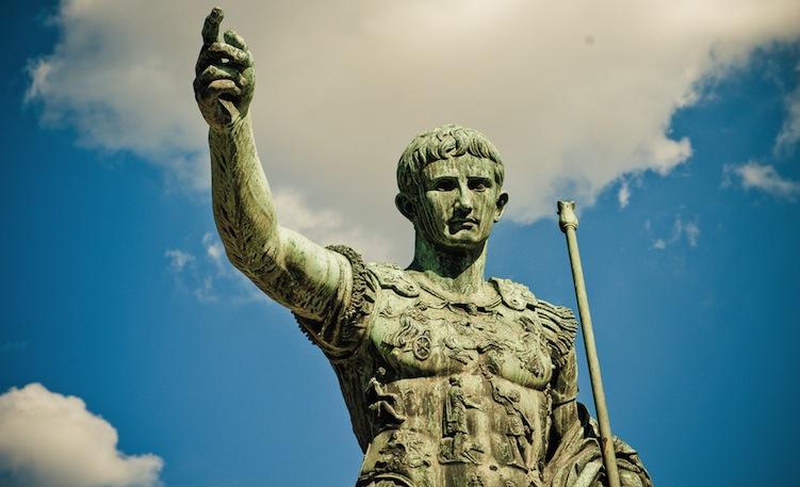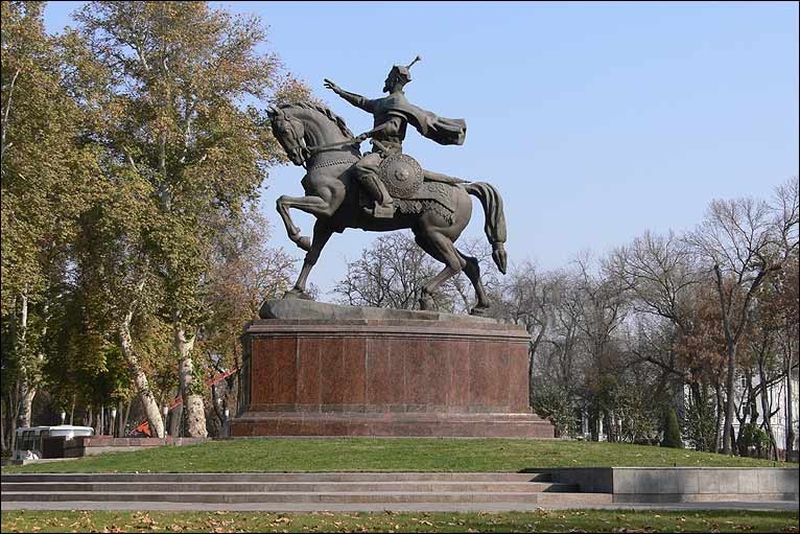Throughout history, there have been many men who would be considered conquerors in the sense that each of these men was powerful, and made a significant impact during the years they were in control. These men were murderers and thieves, and they were able to lead others to become murderers and thieves. They were smart and excellent at planning and strategizing. These men were directly and indirectly responsible for the death of millions of people. And, as their power grew, so did the amount of land they controlled. Here is a list of the 10 greatest conquerors in history.
10 Greatest Conquerors in History
Attila the Hun
Living Years: 434-453 A.D
Location of Occupied Territory: Roman Empire
Attila and his brother shared the role of king of the Hun Empire when their uncle, King Roas, died. In order to gain sole power, Attila arranged to have his brother murdered. His goal was to gather his subjects in order to create a feared and formidable Asian army to take down the Roman Empire, who referred to him as the Scourge of God. Under his leadership, his barbaric army devastated the Roman Empire and dominated Europe. Atilla the Hun and his tribe were ultimately defeated by the Romans and Visigoths after which, without a leader, his empire fell apart.
Alexander the Great
Living Years: 356-323 B.C
Location of Occupied Territory: Greece, Persia, Egypt and Asia Minor (today’s Turkey)
Alexander became the ruler of the ancient kingdom of Macedonia at the age of 20 when his father, Philip II, was assassinated. Until the age of 16, Alexander had been tutored by Aristotle.
By the time Alexander was 22, he had already conquered Greece with his powerful army of over 37,000 soldiers. From there, he went east and defeated the Persian Empire. He then systematically defeated every area in Asia Minor (modern day Turkey) and then from Egypt to India before succumbing to fever at the age of 33. Alexander has a number of cities around the world named after him, most notably is Alexandria located in Egypt.
Julius Caesar
Living Years: 100-44 B.C (or possibly born in 102 B.C)
Location of Occupied Territory: Gaul (now France)
After Caesar actively served in the Roman army, he moved to Gaul and secured the position as governor of the country in 58 B.C. As an army general, he led his loyal 50,000 soldiers in war and successfully conquered Gaul, adding this land to the ever expanding Roman Empire. The Roman Empire made up most of what is now Western Europe. Caesar was a powerful and cruel ruler who easily made enemies, including some politicians in Rome. He systematically killed off his political enemies until they finally murdered him in 44 B.C. The month of July is named after Julius Caesar.
Caesar Augustus
Living Years: 63-14 B.C
Location of Occupied Territory: Egypt (added to Roman Empire)
Caesar Augustus, one of the greatest conquerors in history, was named Octavius at birth, and became known as Augustus beginning in 26 B.C. When his great-uncle, Julius Caesar was killed in 44 B.C, Augustus, at the age of 17, was named as his adoptive son and heir. Augustus declared war on Egypt after his sister's husband, Marc Antony, divorced her in order to be with Cleopatra. When Antony and Cleopatra committed suicide, Augustus became the first Roman Emperor, the sole ruler of Rome. At the time of his death, Augustus had doubled the size of his empire. Like his adopted father, Augustus had a month named after him: August.
Charlemagne
Living Years: 742-814
Location of Occupied Territory: Italy and non-Christian Europe
Charlemagne, known as Charles the Great, became King of the Franks, along with his brother, upon his father’s death. His brother later died under suspicious circumstances. Like his father, Charlemagne acted as protector of the Catholic Church and helped the pope by taking power over from the Lombardy. He then took on the crown of Italy himself with the full support of Pope Leo III. He led a number of attacks in the name of Christianity, and ordered execution for as many as 1000 people a day who did not conform. Charlemagne died due to complications of fever when he was 72 years old.
William the Conqueror
Living Years: 1028-1087
Location of Occupied Territory: England, Scotland and Wales
William the Conqueror was the illegitimate son of Robert, Duke of Normandy, and was therefore also referred to as William the Bastard. When his father died, William took his father's title, but many of his subjects would not accept an illegitimate heir as king, and an assassination attempt was made on his life. Edward, King of England, was a distant cousin of William's and promised William that he would be his successor. When Harold, Earl Wessex was crowned after Edward's death, William invaded England, killed his opponent, and took over as king. William successfully conquered Scotland and Wales during his reign.
Genghis Khan
Living Years: 1162-1227
Location of Occupied Territory: China and parts of Russia, Turkey and Persia
Genghis Khan, one of the greatest conquerors in history, was born in Mongolia to a father who was leader of a small tribe. The new leader threw Genghis Khan, then known as Temujin, and the rest of his family out of the tribe. He began to organize a number of smaller tribes into one large one and then proceeded to go from one village to the next and conquer non-mongolian tribes. As his powerful army grew, he took over not only what is now China, but also areas in Russia, Turkey and middle eastern Persia. The number of people he killed is unmatched by any other conqueror, and the land his overtook was about four times larger than that conquered by Alexander the Great.
Tamerlane
Living Years: 1336-1406
Location of Occupied Territory: Persia, Armenia, Georgia, and areas of Russia
Tamerlane, also known as Timur the Lame because of his partial paralysis, was born in Uzbekistan. He was heavily involved in politics and claimed to be a descendant of Genghis Khan. He attempted to recreate Khan's empire by using his Islamic beliefs as a basis to build an army and take over a number of areas in Asia, Africa and Europe. Under Tamerlane’s leadership, his army killed over 17 million people, or 5% of the population of the world at that time, while using religion as a motivator. Tamerlane's violent conquests are believed to be why Asia now has such a large Islamic following.
Napoleon Bonaparte
Living Years: 1769-1821
Location of Occupied Territory: Holland, Sweden, Westphalia, Italy, Naples and Spain
As a young man, Napoleon attended military school, leaving early when his father passed away, and quickly became a leader in the French Revolution eventually acquiring the rank of Commander. After conquering Egypt, he worked on centralizing the French government, establishing laws and reestablishing the catholic religion. When Britain, Russia and Austria declared war on France, Napoleon defeated them and gained power over a number of territories in Europe, thus making him one of the greatest conquerors in history. Napoleon then strategically placed trusted family and followers as leaders across the nation after he successfully dissolved the Roman Empire. Napoleon unsuccessfully invaded Russia in 1892, which led up the Battle of Waterloo. This historic battle ended in Napoleon's capture and eventually, his death.
Adolf Hitler
Living Years: 1889-1945
Location of Occupied Territory: Europe and Africa
Born in Austria, Hitler was a German politician who became leader of the Nazi party during World War II. Hitler was very charismatic and often spoke of communism and capitalism being conspiracies developed by Jews. Hitler became chancellor of Germany in 1933 and developed the Third Reich, a dictatorship directed at eliminating the Jewish population. Because of the fast paced economic recovery after the Great Depression, Hitler was given extensive support by his followers. After declaring war on Poland, Britain and French attacked Germany, resulting in WWII. By the end of the war, Hitler's army had taken over most of North Africa and Europe. When the US joined in to help the Soviets, Hitler committed suicide.












View All Comments /Add Comment